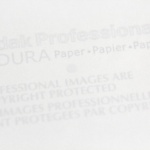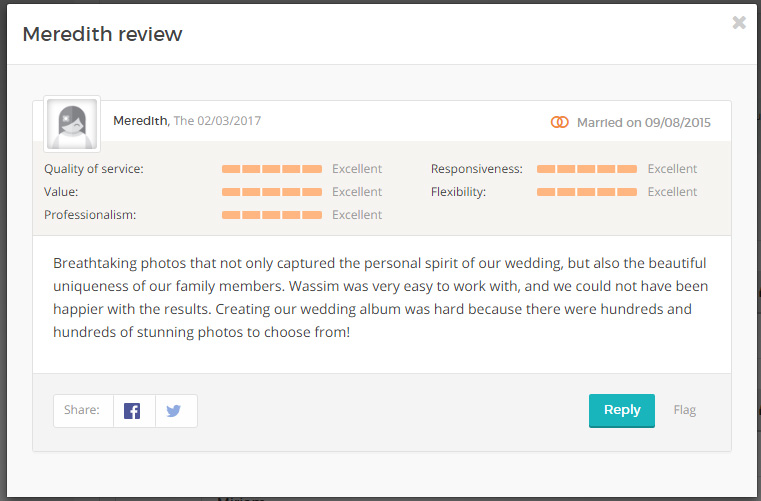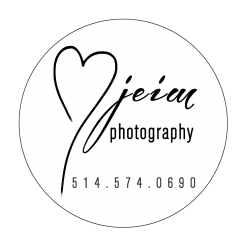Five reasons you should develop your prints with your photographer
Delivering the wedding pictures to the client as digital files on a CD/DVD has become a common thing, whether it is at an extra charge or not and whether wedding photographers want to admit it or not. From the client’s perspective, beside getting a beautiful wedding album from their photographer, having access to their wedding digital files in high resolution is very important. But one important thing clients tend to forget is that getting the high resolution files and developing them themselves will not necessarily produce the same quality prints as those developed by their photographer. Here’s why:
1- Better Photographic paper: Prints done in consumer labs (big chain stores, drugstores, etc) are often done on consumer quality paper. Professional photographers have access to professional photo labs which print on professional photographic paper. That normally offers better color reproduction, better skintones, has better coating and will fade a lot less over time than the consumer paper. Click the picture on the right to see what the back of a professional paper may look like.
2- Sharpening: Sharpening is basically making the image look clearer. Normally, the digital files delivered by the photographer are already sharpened but the amount of sharpness required may vary from a print size to another. For instance, sharpening an image for a 4×6″ print isn’t going to be the same as for a larger print like an 11×14″. The photographer will know before sending the files to the lab what sharpening is required for every print format and if the file is already sharpened enough or if it could benefit from some extra-sharpening in order to produce the best result on print.
3- More corrections: Before sending the photos to print, every professional photographer who respects his/her work, will review them one more time in order to make sure that no flaws will appear on paper. The files must have been already edited and corrected by the photographer but reviewing them a second or a third time doesn’t hurt. I would think of this as another chance for the photographer to review their work and make sure that the pictures their client wants on print are perfect.
Brightness, contrast, sharpness and skin imperfections among others, are all technical aspects that will be reviewed carefully and their obviousness will depend again on the print size. For instance, a 4×6 or 5×7″ print will benefit a lot from extra-sharpening (as already mentioned above) and some more brightness compared to a large print. Also, on large prints, skin imperfections will be more obvious, so the photographer will have to inspect the picture carefully and do the required final touches before sending it to the lab.
4- Cropping: This is something that often creates confusion to many clients. Files from most professional cameras (at least those used in weddings) have a 3:2 aspect ratio (like a rectangle where the longer side is 1.5 times the shorter side), just like the 35mm film. That means printing a file with that aspect ratio on a 5×7″ or 8×10″ or 11×14″ or some other formats that are not 3:2, will lead to some parts of the picture being lost or cut off. It’s better to let the photographer decide how to crop the pictures since he/she is the artist and the one who originally composed them. In other words, the client needs to trust the judgement of their own photographer, and not the guy in the lab, on how a certain picture will need to be cropped. In some cases, when cropping will lead to some important parts of the picture being lost, the photographer will offer the advice of using a matte to fit the print in the required format.
5- Quality control: After receiving the prints from the lab, the photographer will go through them one by one to make sure everything is as expected and that the prints match their calibrated monitors, in terms of brightness, contrast and color balance. In case of a mistake by the lab, and mistakes do happen even though only on rare occasions when it’s a professional photolab, a re-print may be necessary. This is another example where the expertise of the photographer becomes invaluable.
Finally, I have to say that I’m only speaking of myself of course. That’s the way I work but I would assume that every professional photographer would follow in some way the steps above.
Thanks for reading!
Wassim Njeim




